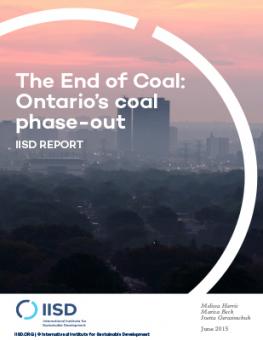
The End of Coal: Ontario’s coal phase-out
Ontario has successfully implemented its policy to put an end to coal use in 2014. This energy transition has become “the single largest GHG reduction measure in North America”: since 2007, when coal accounted for about 25 per cent of its electricity generation, Ontario has reduced its greenhouse gas emissions by approximately 34 Mt or 17 per cent.
What lessons can be learned from Ontario’s coal phase-out experience? How can its success be replicated in other parts of the globe? This paper explores this question for all those around the world who may draw inspiration and lessons learned from Ontario: policy-makers, campaigners, entrepreneurs and others interested in transitioning to a low-carbon future.
We rely on the concept of the “window of opportunity” and suggest that all elements critical to a sustainable energy transition can be clustered within the four “panes” of this “window”: context, champions, concerns and complementary policies. These “panes” provide the basis for the structure of this paper. This analysis has been informed by a comprehensive review of existing literature and semi-structured interviews with high-level experts from Canadian political and academic circles, industry and civil society.
Participating experts
You might also be interested in
How Fossil Fuels Drive Inflation and Make Life Less Affordable for Canadians
New report takes closer look at how Canada’s dependence on fossil fuels impacts energy costs and prices of essentials such as transportation, home heating, and housing.
How Can We Work With Nature to Tackle Drought and Desertification?
Drought is one of the most devastating and pervasive challenges exacerbated by climate change. However, we can work to reduce its effects through nature-based solutions for land restoration and climate-smart agriculture.
Why Liquefied Natural Gas Expansion in Canada Is Not Worth the Risk
An analysis of the economic and environmental risks of liquified natural gas expansion in Canada.
New Report Highlights Economic and Environmental Costs of Canada’s LNG Expansion
New report explains how LNG expansion will not only hamper Canada’s progress toward its climate goals but also create challenges for the economy in the long term.